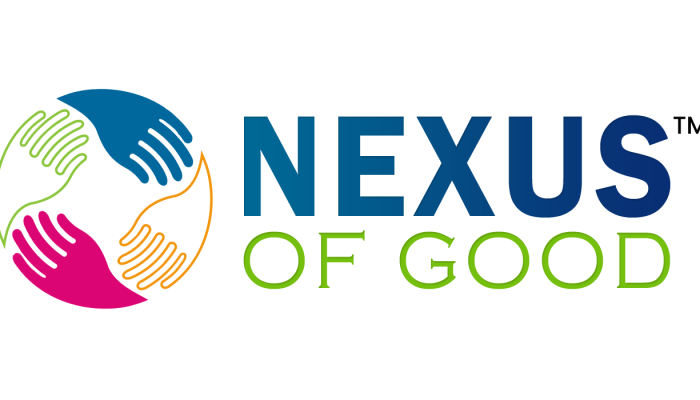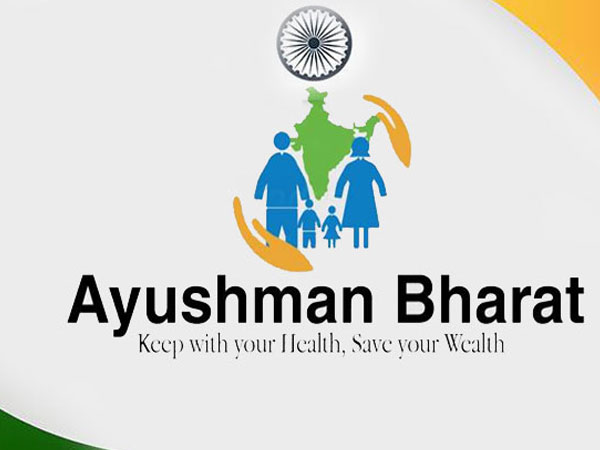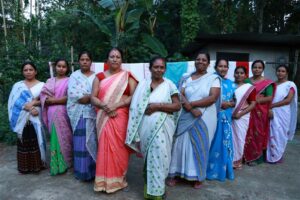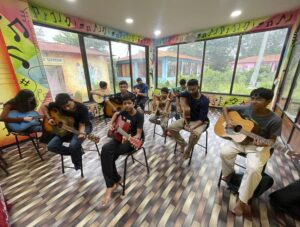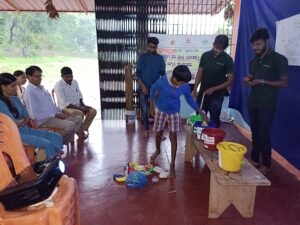Ayushman Bharat – Pradhan Mantri Jan Arogya Yojana (AB-PMJAY)
Background and rationale
India has achieved significant public health gains and improvements in health care access and quality over the last three decades. The health sector is amongst the largest and fasting growing sectors, expected to reach US$ 280 billion by 2020. However, at the same time, India’s health sector faces immense challenges.
Health sector in India continues to be characterized by high out-of-pocket (OOP) expenditure, low financial protection, low health insurance coverage amongst both rural and urban population that forces people to undertake catastrophic expenditure. 62.58% of health expenditure is paid out of pocket. Hospitalization expenses are not covered through any form of health protection. According to one estimate, each year 6 crore people are pushed below the poverty line as they meet their healthcare needs by spending large a proportion of their income and savings, borrowing money or selling their assets.
The current chronic morbidity rate for poorest 40% is about 4% whereas the hospitalisation rate is 2.45%. Compared to this, the richest 40% have the slightly lower morbidity but a hospitalisation rate of 5.15%. This gap in morbidity and hospitalisation for the poor is because of lack of financial means and access.
Ayushman Bharat was launched to eliminate the incidence of impoverishment due to catastrophic expenditure on health. It represents a transition from segmented, sectoral and fragmented program implementation models towards a comprehensive, holistic, need-based healthcare system. It is also expected to cater to the latent demand (of the poor) for quality healthcare while ensuring cashless access to secondary and tertiary care services.
Ayushman Bharat: India’s commitment to Universal Health Coverage
Ayushman Bharat encapsulates a progression towards promotive, preventive, curative, palliative and rehabilitative aspects of Universal Healthcare through access of Health and Wellness Centers (HWCs) at the primary level and provisioning of financial protection for accessing curative care at the secondary and tertiary levels through engagement with both public and private sector.
Ayushman Bharat adopts a continuum of care approach, comprising of two inter-related components:
- Creation of 1,50,000 Health and Wellness Centres which will bring health care closer to the homes of the people. These centres will provide Comprehensive Primary Health Care (CPHC), covering both maternal and child health services and non-communicable diseases, including free essential drugs and diagnostic services. The first Health and Wellness Centre was launched by the Hon’ble Prime Minister at Jangla, Bijapur, Chhatisgarh on 14 April 2018.
- The second component is the Pradhan Mantri Jan Arogya Yojana (PM-JAY) which provides health protection cover to poor and vulnerable families for secondary and tertiary care. The Health and Wellness Centres will play a critical role in creating awareness about PM-JAY, screening for non-communicable diseases, follow-up of hospitalisation cases among others.
Highlights of PM-JAY
Objectives of PM-JAY
o Improve affordability – PM-JAY will enable the bottom 40 per cent of the population to afford and access secondary and tertiary care including pre-hospitalisation and post-hospitalisation expenses
o Improve accessibility – PM-JAY will enhance access to medical care along a continuum of care. Through the network of empaneled public and private hospitals, responsibility will rest with supply side especially in the private sector
o Improve quality of care – PM-JAY will encourage healthcare providers to improve the quality of care and services through standard treatment protocols. Payment through the private sector and beneficiary feedback mechanism will further propel healthcare providers to improve the quality of their services.
Coverage
Over 10.74 crore (100 million) vulnerable entitled families (approximately 50 crore or 500 million beneficiaries) are covered as per the Socio-Economic Caste Census (SECC) 2011 deprivation criteria for rural families and identified occupational categories of urban workers’ families.
Key Features
- Health cover of up to Rs. 5,00,000 per family per year, for secondary and tertiary care hospitalization through a network of Empaneled Health Care Providers (EHCP)
- Cashless access to services for the beneficiary at the point of service
- No cap on family size, age or gender
- All pre–existing conditions are covered. The benefit cover includes pre & post hospitalization expenses
- Benefits are portable across the country in all empaneled hospitals
- Services include about 1,394 procedures covering treatment, food, drugs and supplies, and diagnostics services
- PM-JAY covers up to 3 days of pre-hospitalisation and 15 days of post-hospitalisation expenses such as diagnostics and medicines
Institutional Structure
An independent autonomous body in the form of a National Health Authority (NHA) has been set up to manage PM-JAY at the national level. Headed by a full-time Chief Executive Officer (CEO), NHA is responsible for implementing the scheme across the country. It is governed by a Governing Board chaired by the Union Minister of Health & Family Welfare and has 11 members.
To implement the scheme at the state level, states have formed State Health Agencies (SHAs) in the form of a society/trust. SHAs have full operational control over implementation of the scheme in the state.
Status of progress of PM-JAY (As of 03.10.2019)
| Beneficiaries Verified | 10.7 crore
| Beneficiaries admitted to hospital (since 23 September, 2018) | 48.3 Lakhs
| Amount authorized | 7,686 Crores
| Hospitals empaneled | 18,289 (47% public hospitals & 53% private hospitals)
| Beneficiaries admitted to hospital (since 23 September, 2018) | 48.3 Lakhs
| Amount authorized | 7,686 Crores
| Hospitals empaneled | 18,289 (47% public hospitals & 53% private hospitals)
Currently, 32 States/UTs are implementing PM-JAY.
o Punjab has started implementation on 20th August 2019
o Rajasthan has started implementation on 1st September 2019
o Four States yet to implement PM-JAY – Delhi, Odisha, Telangana and West Bengal.
More than 10.7 crore beneficiaries have been verified and nearly 25,000 beneficiaries, on an average, in a single day are receiving treatment under PM-JAY. In terms of day to day performance, since the launch of PM-JAY.
o Three PM-JAY E-cards are getting generated in every one second.
o One PM-JAY beneficiary is receiving free treatment in every three seconds.
In terms of the claims amount, 55% of the claims amount has been filed for tertiary packages. The 5 major tertiary procedures which have witnessed the highest utilization are:
o PTCA – single / double stent
o Linear Accelerator External Beam Radiotherapy
o Primary Knee Replacement
o Total Hip Replacement
o Intensive Neonatal Care Package
The portability feature offered under PM-JAY has been greatly availed by beneficiaries. More than 45,600 beneficiaries have availed treatment worth around Rs. 120 crores through portability.
